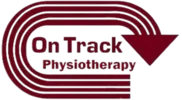Complete Achilles Tendon Treatment Guidelines
One of the most common injuries I treat for active individuals in Ann Arbor, Mi is Achilles Tendon issues.
That could be an Achilles Tendon Rupture, Achilles Tendinitis, or Achilles Tendinopathy. All are slightly different in their mechanism of injuries but all have the same milestones and goals to progress through in order to experience a full recovery. Obviously a rupture will take a longer time frame to recover than a tendinitis or tendinopathy scenario (but that’s probably a topic for a complete separate post).
***Be sure to pay special attention to step #3 as this is often missed by many rehab clinicians and strength coaches
The first step into the process is understanding pains influence on the problem as well as anatomy and biomechanics influence on the problem. These are two separate issues, as often pain does not correlate directly with the amount of tissue damage present. This makes it important to understand the guidelines of pain (what is okay to work though and what is not okay to exercise through).
We discuss this in the below video:
The other important consideration we pointed out in the video above is the anatomy of the calcaneus. The shape of the heel creates a compression force on the Achilles tendon when stretched. Which is important to consider if the pain or location of the injury is at the base of the tendon or if the tendon is highly sensitive. For these reasons, it is often NOT a good idea to stretch your achilles tendon (especially when you are experiencing pain).
Once you understand the pain and irritating factors it is important to understand how to re-establish capacity back into the tendon without aggravating the tissue.
We do this through strengthening in a NON stretched position FIRST. Then start gradually working our way back into STRENGTHENING THROUGH a stretched position. Not hanging out for 30 seconds in a sustained stretched position.
In Part 2: the video below we discuss our two favorite exercises to start accomplishing this:
Step #1 and #2 are the easy parts of the rehab gameplan. However, this will probably only solve about 70% of cases. The other 30% of cases you need to consider other factors which may be influencing pain, as well as return to play scenarios for those involved with higher levels of activity!
To understand this further we need to consider the two main achetypes of feet you will see…
A pronated (flat) foot, and a supinated (high arch) foot.
Depending on what media and other healthcare providers have led you to believe, you probably feel that both flat feet and arched feet are undesirable. However, that couldn’t be further from the truth!
Both types of feet are necessary for everyday tasks. It’s no different than the ability to rotate your head right and left. Flat feet and arched feet are two extremes that the body should be capable of experiencing both. If the foot is not adaptable at creating both, and experiencing both at the correct moment, then you limit the foots capabilities.
During gait or walking our foot SHOULD experience supination, to pronation, to re-supination. That is normal and necessary mechanics of walking, gait, running, etc.
Pronation is needed to absorb force (store potential energy) or absorb/attenuate forces. Supination is necessary to produce force by creating a rigid foot.
The body’s ability to re-supinate the foot is accomplished through the windlass mechanism. Which is only created by getting great toe extension. The only way to get great toe extension during gait is by allowing the foot to pronate and weight bear over the great toe as your center of mass moves forward (horizontally) during gait, walking, running, etc.
If you cannot pronate effectively, you will not create an effective windlass mechanism and thus not experience re-supination. So all those towel scrunches or tripod foot exercises you are doing with the knee straight have little carry over to life as during walking, running, etc we are moving forward! The tibia is moving forward, the knee is moving forward, the hips and body is moving forward…
So we must pronate effectively to allow our body, knee, and tibia to move forward. Load the foot and the kinetic chain. Experience pronation effectively and let the body get over the great toe to effectively utilize the windlass mechanism to re-supinate the foot and prepare for propulsion. The video below will hopefully give you a better understanding:
This above step #3 is often the most overlooked problem to achilles injuries as well as many foot/ankle/knee problems. Understand it, and you can make a world of difference for people who seem to be constantly stuck in a state of injury or rehab purgatory.
Finally the last step in the process is exposing the tendon back to a situation similar to sport.
Sure eccentric loading is great for the tendon histology development, and the athlete will certainly experience eccentric loading of the tendon in sport. However, a concept often over looked is the ability to create co-conntraction of the kinetic chain to distribute or absorb force more effectively. When running or jumping, the body needs relative stiffness in the ankle (as well as all the other joints) to not crumble when applying a force into the ground. Then store the potential energy to propel themselves forward. Look at any sprinter at top end speed or dunker taking off from a one foot jump approach.
Those who do it effectively create a lot of stiffness around their joints at ground contact. Meaning you will not see a large counter movement occur during a one foot jump approach (or really even someone who is more of an elastic two foot jumper). A sprinter you will notice a very stiff an rigid foot and even knee at ground contact. This is because the body is co-contracting the calf, hamstring, quad, and glute to quickly apply force and absorb force through the kinetic chain.
In video 4 we discuss some of my favorite dynamic exercises that take into account teaching co-contraction at ground contact.
If you are in Ann Arbor, MI we invite you to a FREE Discovery Session to see how we can best help you!
If you don’t live near Ann Arbor, MI no worries! We work with distant clients all the time online 🙂


